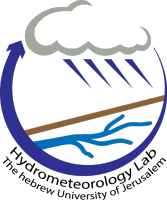Abstract:
The geomorphic response of channels to base-level fall is an important factor in landscape evolution. To better understand the complex interactions between the factors controlling channel evolution in an emerging continental shelf setting, we use an extensive data set (high-resolution digital elevation models, aerial photographs, and Landsat imagery) of a newly incising, perennial segment of Nahal (Wadi) HaArava, Israel. This channel responds to the rapid and progressive lowering of its base-level, the Dead Sea ( \textgreater 30 m in \~35 years; \~0.5-1.3 m yr -1 ). Progressively evolving longitudinal profiles, channel width, sinuosity, and knickpoint retreat during the last few decades were documented or reconstructed. The results indicate that even under fast base-level fall, rapid delta progradation on top of the shelf and shelf edge can moderate channel mouth slopes and, therefore, largely inhibit channel incision and knickpoint propagation. This channel elongation stage ends when the delta reaches an extended accommodation within the receiving basin and fails to keep the channel mouth slopes as low as the channel bed slopes. Then, processes of incision, narrowing, and meandering begin to shape the channel and expand upstream. When the down-cutting channel encounters a more resistant stratum within the channel substrate, these processes are restricted to a downstream reach by formation of a retreating vertical knickpoint. When the knickpoint and the channel incise to a level below this stratum, a spatially continuous, diffusion-like evolution characterizes the channel's response and source-to-sink transport can be implemented. These results emphasize the mouth slope and channel substrate resistance as the governing factors over long-term channel evolution, whereas flash floods have only local and short-lived impacts in a confined, continuously incising channel. The documented channel response applies to eustatic base-level fall under steepening basin bathymetry, rapid delta progradation, and lithologic variations in the channel substrate.
Website

